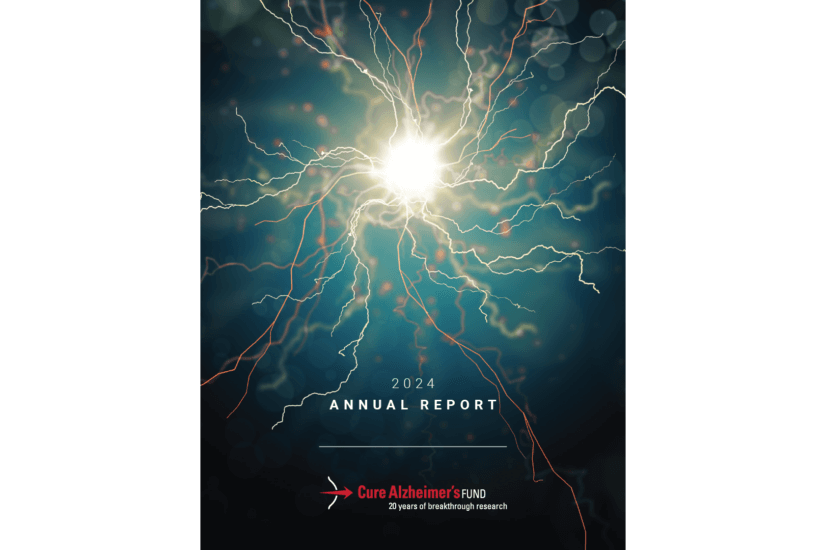Two new Alzheimer’s drugs, Flurizan (Myriad) and Bapineuzumab (Wyeth/Elan), failed clinical trials. Cure Alzheimer’s Fund’s Dr. Rudy Tanzi offers some prespective on these drugs.
Read the CNN Money Myriad (Flurizan) press release here
Read the ABC News report on Flurizan
Read the Wyeth/Elan bapineuzumab press release here
Clinical Trial Update
By Dr. Rudolph Tanzi, Massachusetts General Hospital
The results of two clinical trials for Alzheimer’s disease (AD) based on the “amyloid (Αβ) hypothesis of AD” were recently released — flurizan (Myriad) and bapineuzumab (Wyeth/Elan). These therapies are aimed at slowing disease progression by curbing the accumulation of Αβ in the brain.
The first trial was based on the Αβ immunotherapy (passive immunization) approach from Wyeth/Elan. In the passive immunization approach, antibodies targeting Αβ are injected intravenously into AD patients. Wyeth/Elan has announced that the phase II trial of their passive immunization antibody, bapineuzumab, failed. However, in post-hoc analyses, some benefit was observed in AD patients who did not carry the APOE4 genetic risk factor. The reason for this difference could be that APOE4-carriers (50-60% of AD patients) generally have much more Αβ amyloid on their brain blood vessels. Thus, it is possible that the Wyeth/Elan antibody got sequestered by excessive cerebral blood vessel amyloid, and was unavailable for the task of clearing amyloid plaques and toxic Αβ oligomers in the brain. Bapineuzumab is now in a phase III clinical trial. While the Wyeth/Elan phase II trial had mixed results, the hope is that their phase III trial will be positive (at least in APOE4-negative patients). 10 other drug companies have various Aβ antibodies in passive immunization clinical trials. The hope is that some of these antibodies targeted against Αβ will yield successful results in clinical trials. Lilly will announce their phase II results this month at the International Conference on AD in Chicago.
The second set of clinical trial results recently released were for the drug flurizan from Myriad. Flurizan is a “γ-secretase modulator” (GSM) aimed at selectively blocking the production of the most neurotoxic form of Αβ (Αβ42). Αβ42 is considered the more dangerous form of Αβ because it is able to aggregate more readily into neurotoxic forms. Ibuprofen (and other non-steroidal anti-inflammatories; NSAIDs) was first reported to have GSM properties, i.e. selectively lowering Αβ42 levels in brain. Myriad developed an NSAID-like drug called “flurizan”. This drug failed in a phase II clinical trial, but showed some benefit for AD patients who took higher doses (800 mg) based on post-hoc analysis. Myriad next initiated a large phase III clinical trial with high dose (800 mg) flurizan. They announced on June 30 that the phase III trial also failed. This is not surprising given that flurizan is a very weak GSM and already failed in phase II. While flurizan is now dead, it is important to note that another GSM (E2012; Eisai), with several orders of magnitude higher potency than flurizan, is currently in a phase I clinical trial. In addition, several other drug companies, e.g. TorreyPines Therapeutics, Merck, and Lilly, are also developing highly potent GSMs. Based on preclinical studies in AD transgenic mice, high-potency GSM’s such as E2012 appear to be very effective at curbing disease progress and AD pathology. So, while the relatively weak GSM, flurizan, has failed, the next wave of much more potent GSMs is expected to be more successful.
In conclusion, while the results of these two first Aβ-targeted clinical trials were overall negative, they should not be considered as a true “test” of the “amyloid (Αβ) hypothesis of AD” in the clinic simply because these two drugs are probably not the best representative therapeutics in their respective classes and did not significantly affect Aβ levels in CSF and plasma. Nonetheless, these two early trials have paved the way for subsequent clinical trials (some ongoing) of potentially more efficacious versions of these two therapeutic approaches.







